
How to Gather Internal Product Feedback From Customer-Facing Teams
Internal product feedback is a vital part of the product development process. It helps understand how customers use the product and what they like or dislike. But not only customers can provide this feedback.
Your teammates who interact with customers daily can also provide valuable insights into how to improve the product. This is why collecting internal feedback from customer-facing teams, such as customer success, sales, marketing, and support, apart from external feedback, is also critical.
What is Internal Product Feedback?
Internal product feedback is where customer-facing teams in contact with customers daily provide feedback to the product team on behalf of the customers. They are in charge of handling customer queries and complaints, and they have a deep understanding of what customers want.
Internal feedback is received from customer-facing teams like customer support, customer success, marketing, and sales, who are in direct contact with the customers, prospects, and clients. They receive customer feedback through support teams, emails, user interview feedback, marketing campaign feedback, and Intercom/Zendesk messages.
Internal feedback aims to help product managers understand what customers need and want from their product and how they use it. It is used as a source of information for product development and improvement.
Product managers need to understand the customer’s perspective and identify new opportunities to meet their needs; who can't be in contact with users daily compared to customer-facing teams.
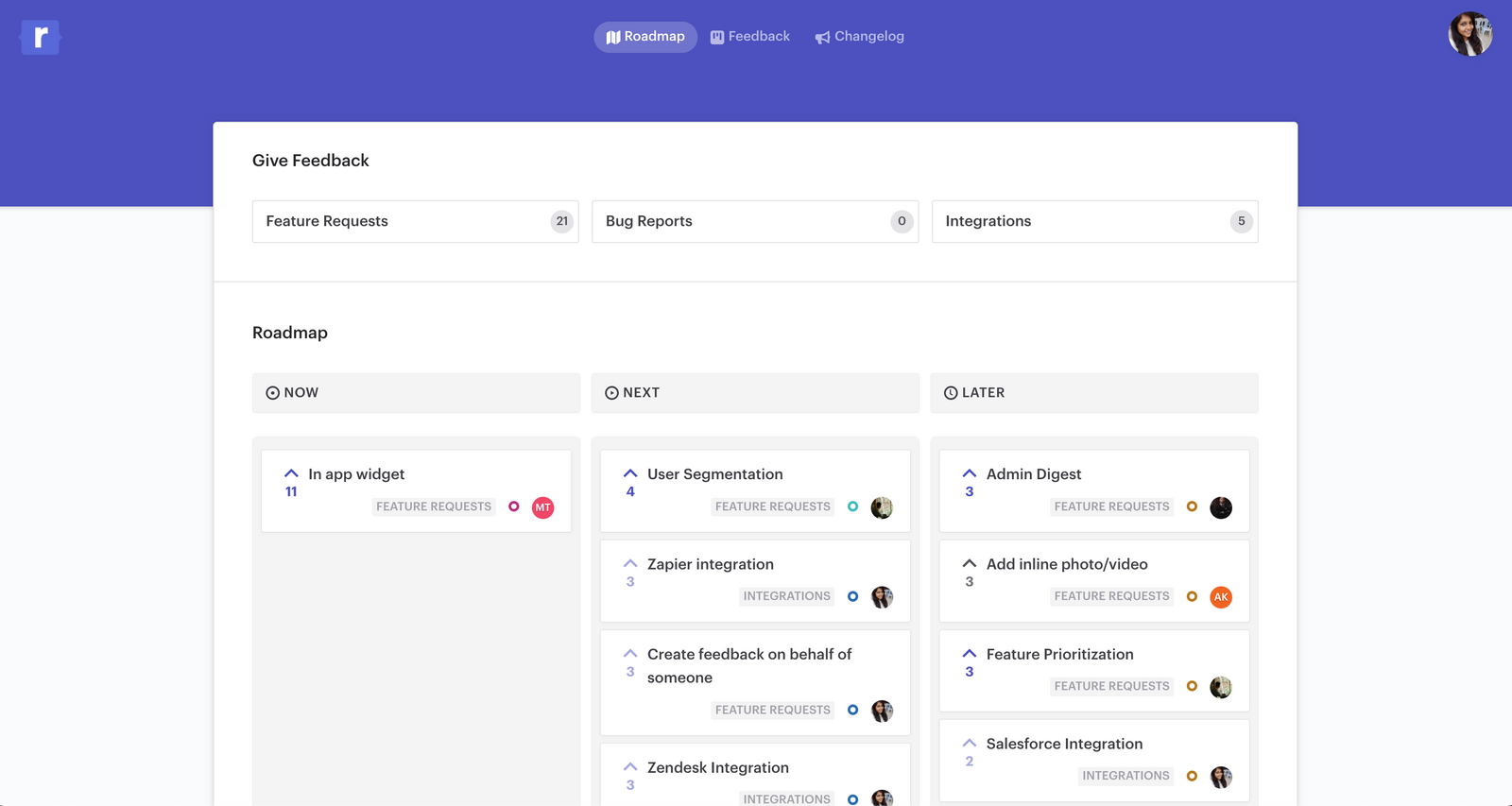
Ways to Collect Feedback from Internal Stakeholders
Meetings with internal stakeholders are a great way to understand customer conversations, but product teams can't sit in every conversation. It is essential always to have feedback channels open with internal teams to understand their concerns and needs.
Some of the most popular channels that you can use when collecting feedback from your stakeholders:
- Emails & Chat
- Support Tickets
- Feedback Management Softwares
- User Interviews
- Shared Spreadsheets/ Docs
- Dedicated Slack Channels
- Team Meetings
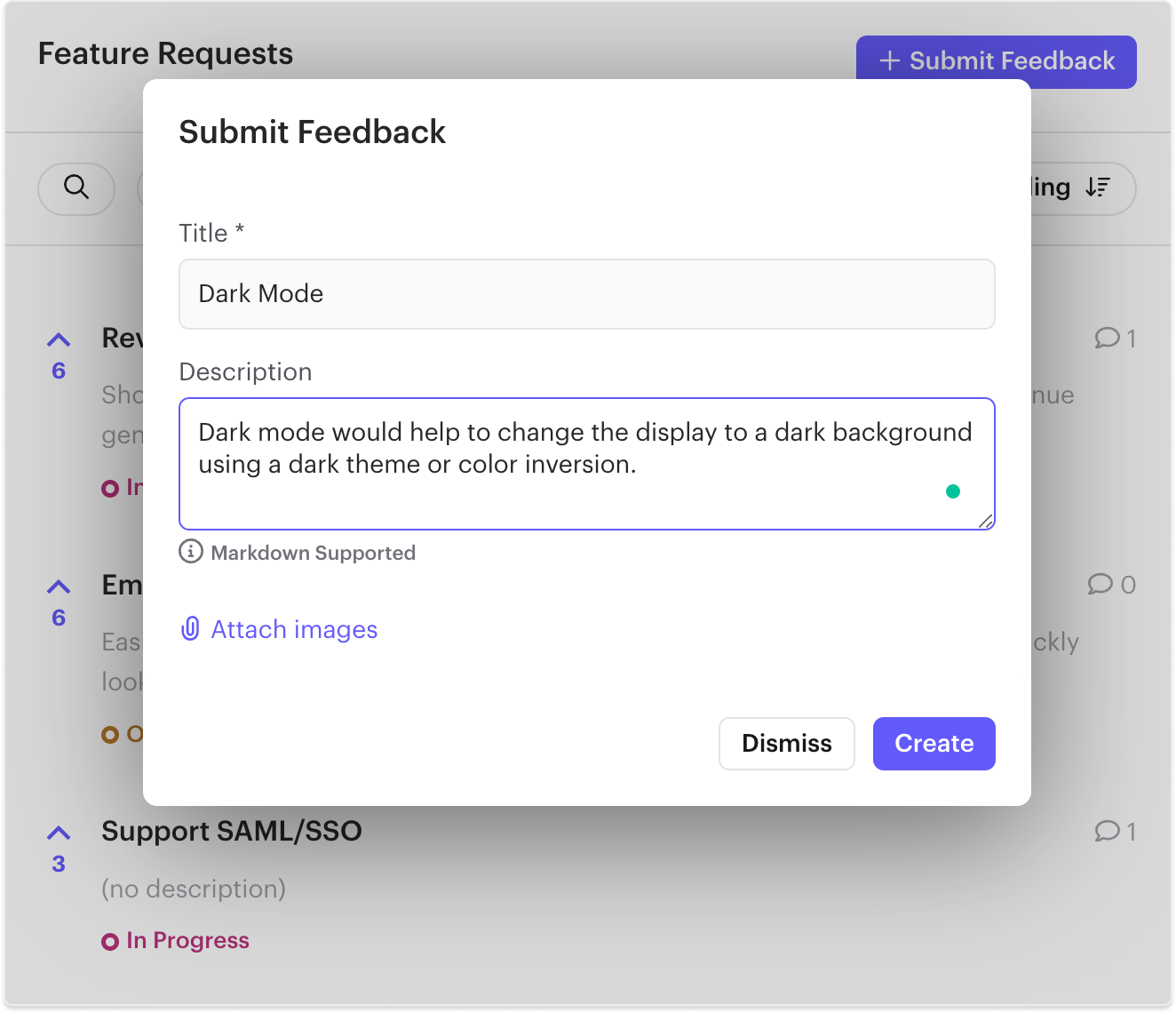
Best Practices For Collecting Internal Product Feedback From Customer-Facing Teams
Product feedback is essential for the success of any company. The customer-facing teams are the first point of contact for any customer, and they should be able to provide valuable insights into how the product is performing.
Internal feedback helps product managers get insights into the customer experience. It provides customer intelligence into what they think and feel about the product.
Acc to Gainsight, Product ships out, customers respond with ideas and suggestions, and Customer Success collects feedback and passes it back to Product. If this loop is working well, this should be a virtuous and impactful relationship. But there’s a common feeling that it plays out in a black hole.
The following best practices will objectively evaluate internal feedback requests, support continuous dialogue and avoid feedback scattered among various teams to set your company up for success and prevent costly customer feedback mistakes.
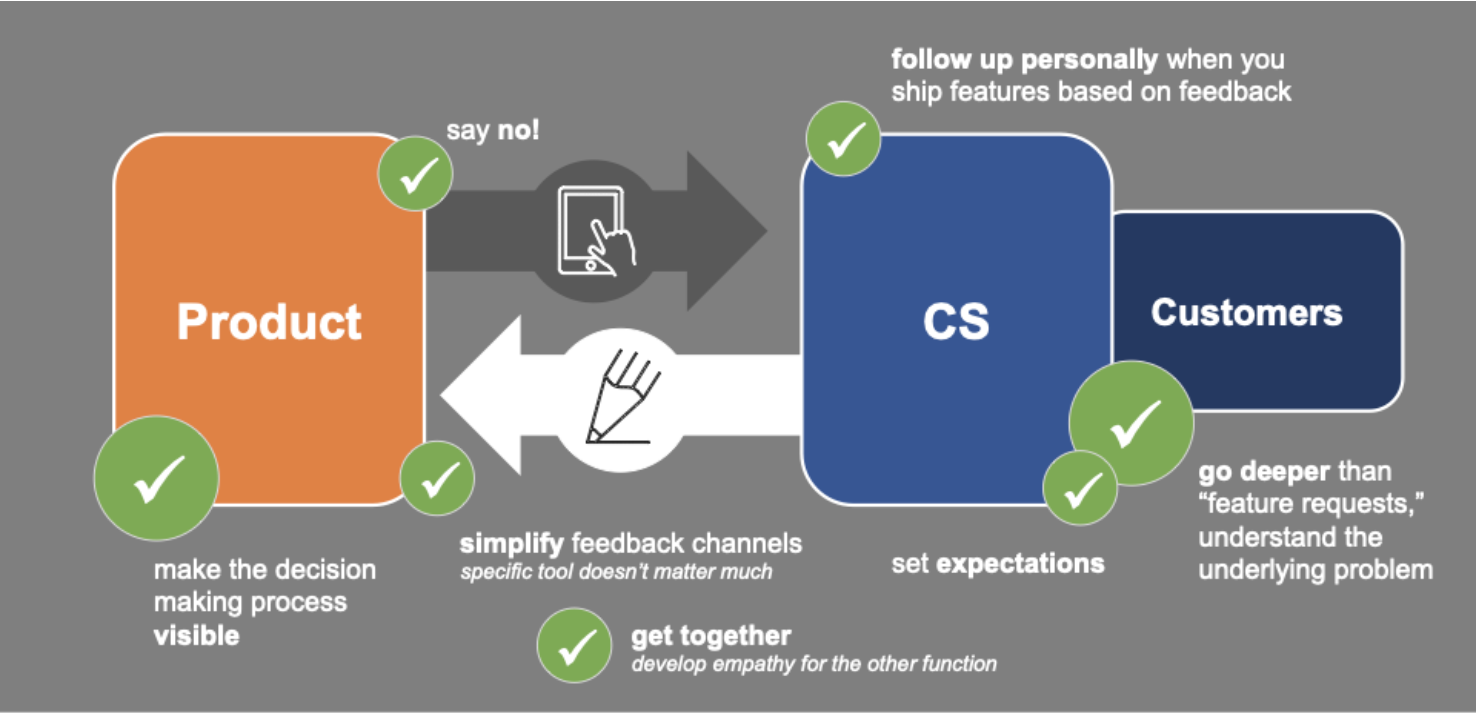
Identify Goals & Guidelines for Collecting Internal Feedback
The purpose of identifying key objectives and setting up guidelines for internal feedback from customer-facing teams is to include metrics that help:
- Understand who is providing the feedback based on the generated monthly recurring revenue (MRR), annual contract value (ACV), and net promoter score (NPS), as well as their demographic information and what plan they are on.
- Calculate what the feedback volume received from that customer is.
- Identify the impact of feedback on overall revenue and product growth depending on how big/small the customer is for you.
Apart from a critical rule of having a documented version of feedback collected on behalf of customers, a set of guidelines should be set for internal teams when collecting feedback:
- An internal roadmap showcases and connects your product development plans to your company’s values, objectives, and mission statements.
- Be clear about the goals of the feedback collection process and managing the customer feedback lifecycle.
- Identify the type of feedback you want to collect, such as feature requests, bug reports, suggestions, and support issues.
- Consider who should be involved in the feedback collection process apart from product managers and customer-facing teams.
- Define how feedback should be given, e.g., via emails, chat, an internal feedback management system such as Rapidr, or user interviews, to organize and prioritize it with a roadmap easily.
Maintain a Centralized Internal Feedback System
A centralized feedback system is a centralized repository for all the feedback from different teams. It can be used to share and collaborate on team feedback, track product development progress, and provide an overview of the development status.
You can use internal feedback tools like Rapidr and Uservoice to maintain a centralized feedback system, share customer requests from Slack, Emails, Intercom, etc., and vote on customers' behalf to represent what customers are asking for.

It is very important that everyone is heard and feels heard. Use a reliable process or tool to collect all feedback systematically. Then find a method to group and prioritize all collected feedback. It helps to use tools that allow everyone to vote and comment.
Benefits of a centralized feedback system
- Maintaining a centralized feedback system where all the feedback can be tracked and analyzed helps ensure that the feedback is not lost and is used effectively.
- When feedback is collected from different teams, it becomes difficult to identify duplicates; a centralized system helps avoid duplicate efforts and increased workload for team members.
- A centralized feedback system can help resolve conflicts and disagreements and gather feedback.
- A centralized feedback system allows for more data to be collected and analyzed, which, in turn, helps improve the decision-making process.
- Understanding their needs, expectations, and pain points also helps get a clear picture of what the customer wants.
Hold Regular Cross-Functional Conversations and Meetings
Break down silos, and hold monthly or bi-monthly customer support, sales, and product team meetings to keep the product development process in sync with customers' actual needs and requests and support the product strategy.
Ensure that there is an open line of communication between all departments to solve any problems quickly. Set up regular meetings with customer-facing and product teams to ask them about their experience with the product and what they think needs improvement.
Be open to feedback and communicate openly, making your team members feel like they’re part of the project. - Joel Montvelisky

To improve customer experience, it is necessary to have regular meetings with customer-facing teams. These meetings will help identify problems, optimize the customer experience, and help make informed decisions with customer feedback.
Such meetups will also boost team morale, provide opportunities to ask questions to each other, and express appreciation for coordination to support the company's overall growth.
Use an Internal Feedback Management Software
Using an internal feedback management system will help you:
- Provide a way for different customer-facing teams to submit feedback on customers and allow product teams to identify where feedback came from based on tags and types of feedback.
- Organize and centralize feedback from various sources such as customer support tickets, Slack channels, Intercom messages, emails, and user interviews.
- Allows internal teams to avoid duplication of feedback requests by merging duplicates, if any, into one request and allowing them to vote on behalf of a customer if a request already exists.
- Break down silos between customer-facing and product teams by providing them access to internal feedback and a means to chime in the discussion around feature prioritization.
- Close the feedback loop by showcasing feedback status with the product roadmap and changelog to inform everyone of feature releases.
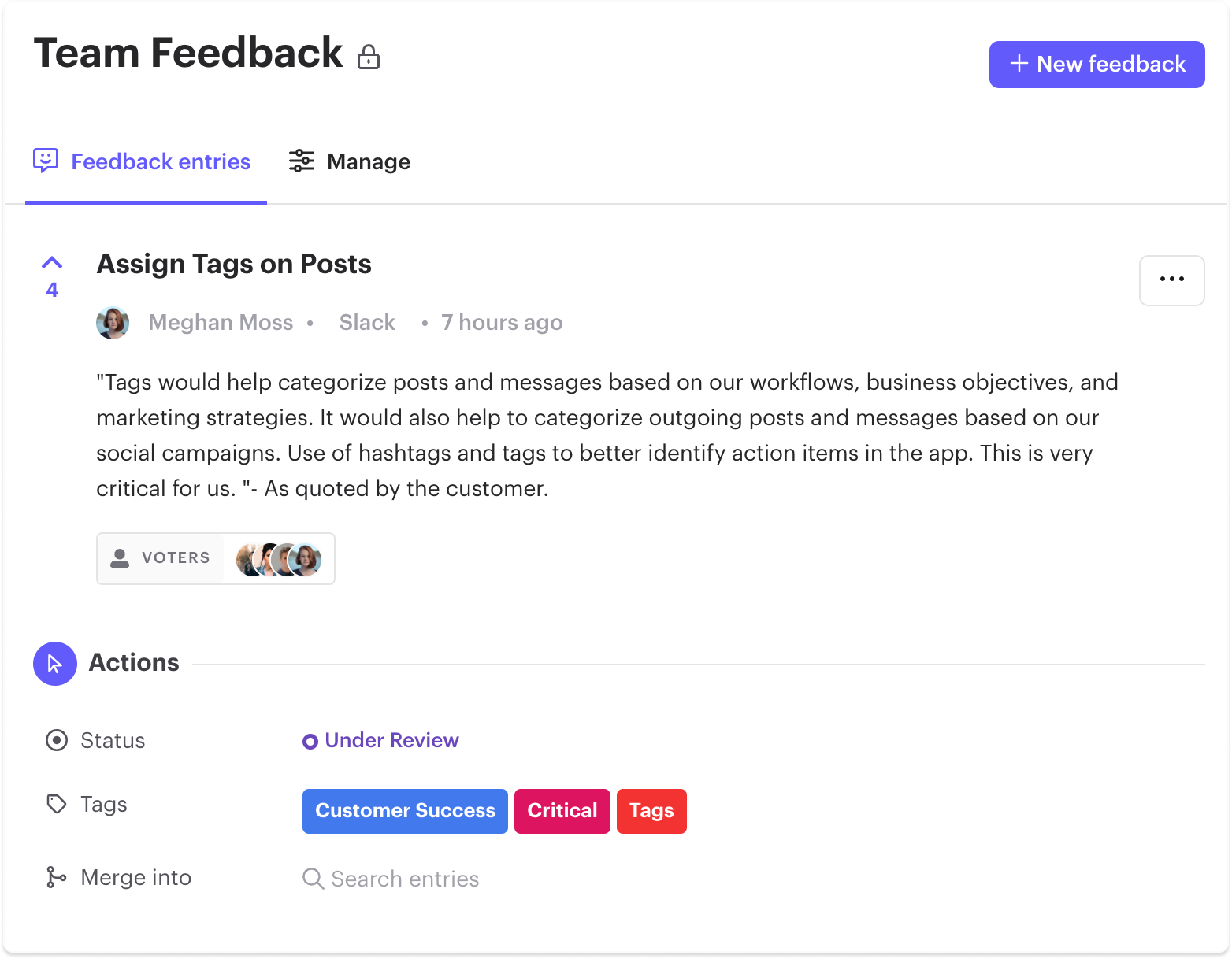
Always Close the Feedback Loop
Without regular communication, your customer-facing teams may feel unheard, and their feedback goes unnoticed by product teams. Closing the feedback loop with internal teams should improve customer experience by using their suggestions and ensuring customer-facing teams feel heard and valued by product managers.
It is essential that all contributors know they have been heard, so you must address all angles of the feedback, including what’s been acted on as well as what has not. - Phil Hall
The customer-facing teams are the ones who interact directly with customers, listen to their complaints and issues, make promises to prospects on deliverables, and market your product to potential customers. They understand what is happening on the front line and can provide valuable insights into how to improve the services.
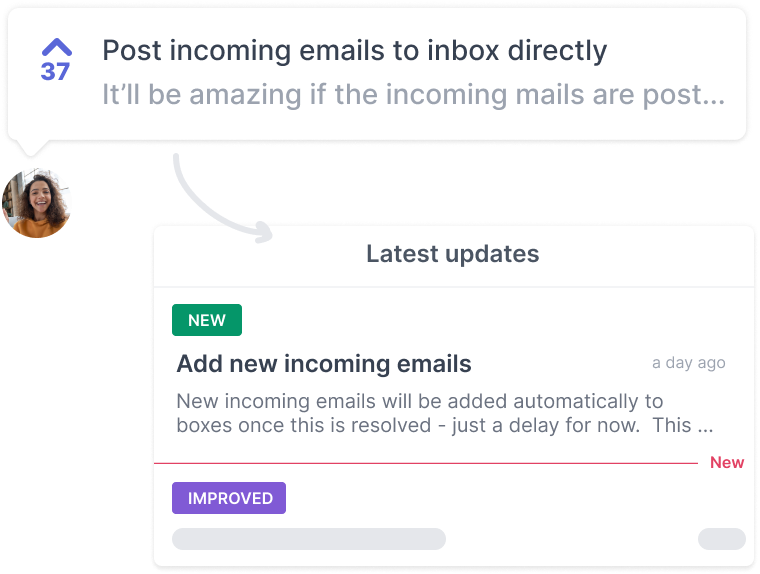
Continuous feedback loops with internal teammates will close communication gaps and allow them to participate in the product feedback cycle. Closed feedback loops thus result in loyal users and valuable customer insights and start a feedback culture in your company.
Complete the feedback cycle and close the feedback loop from capturing ideas to analyzing & prioritizing, and finally, notifying via changelog. This helps make your internal team a part of the roadmapping and decision-making process with internal feedback tools like Rapidr.
Top 3 Internal Feedback Tools For SaaS Companies
1. Rapidr
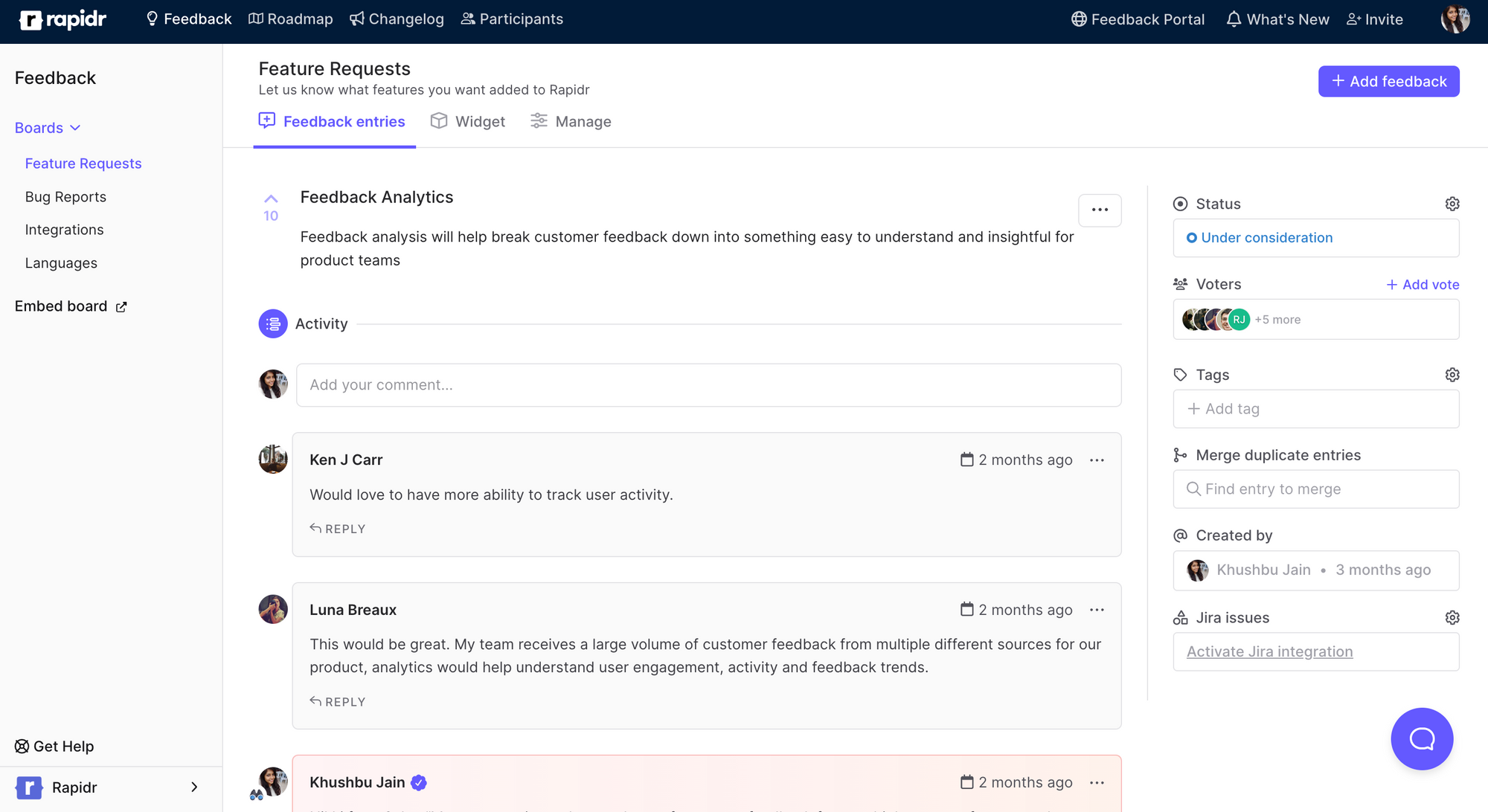
Rapidr is an internal feedback management software and feature tracking tool that helps manage the entire feedback lifecycle, from tracking feedback and suggestions from your team members to prioritizing features and closing the feedback loop with customer-facing teams.
Rapidr lets you capture and track all internal feedback to avoid losing feedback in chaotic spreadsheets, Zendesk tickets, and Intercom-Slack channels.
It helps you organize and analyze them under one roof in a centralized location. Then, inform your roadmap with the most critical feedback and notify users of what's new with release notes.
2. UserVoice
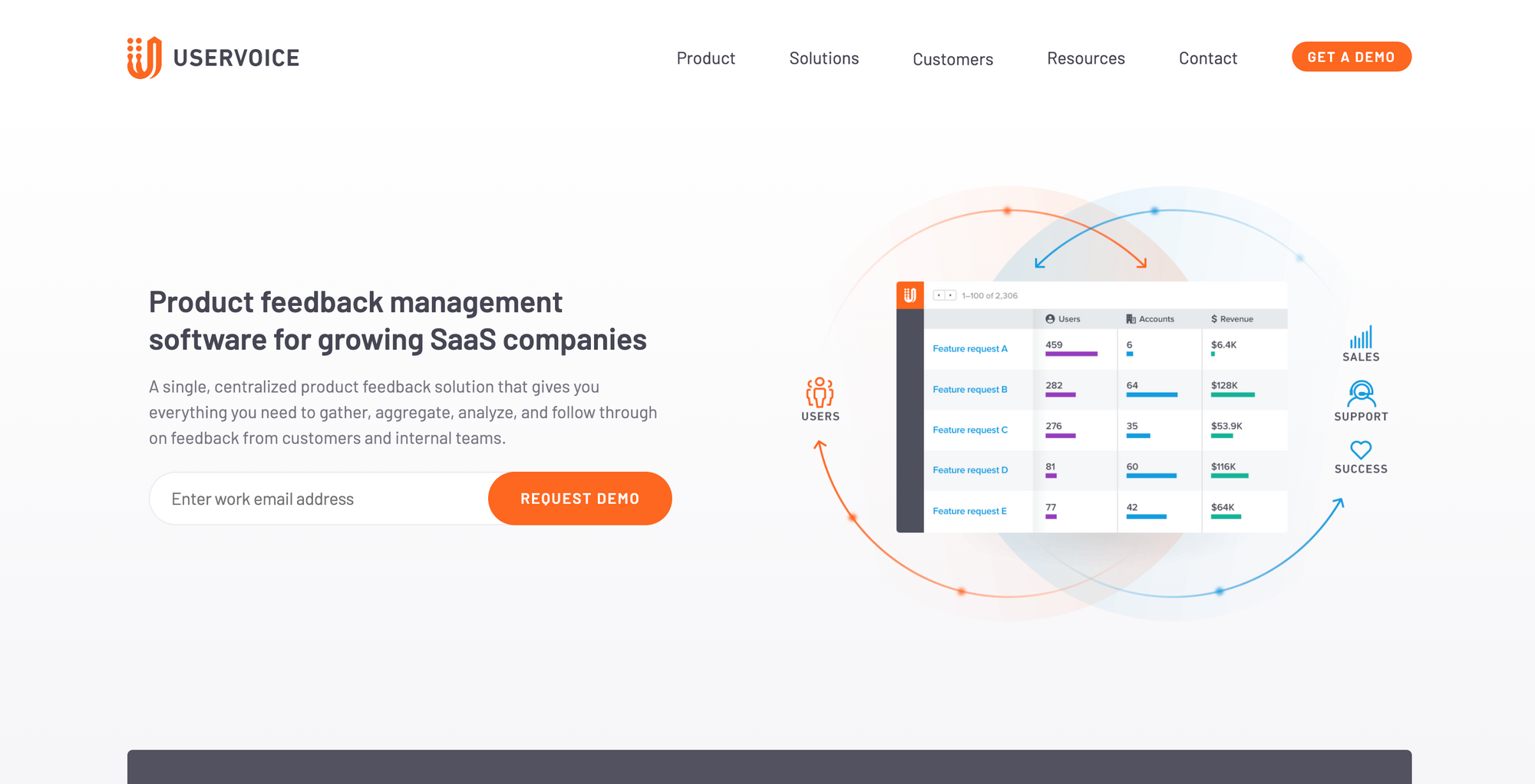
UserVoice caters to enterprise companies that want to gather internal feedback, process support requests, and increase customer satisfaction. UserVoice allows companies to create feature request voting boards for team members to share their ideas, opinions, and votes on behalf of customers.
3. Typeform
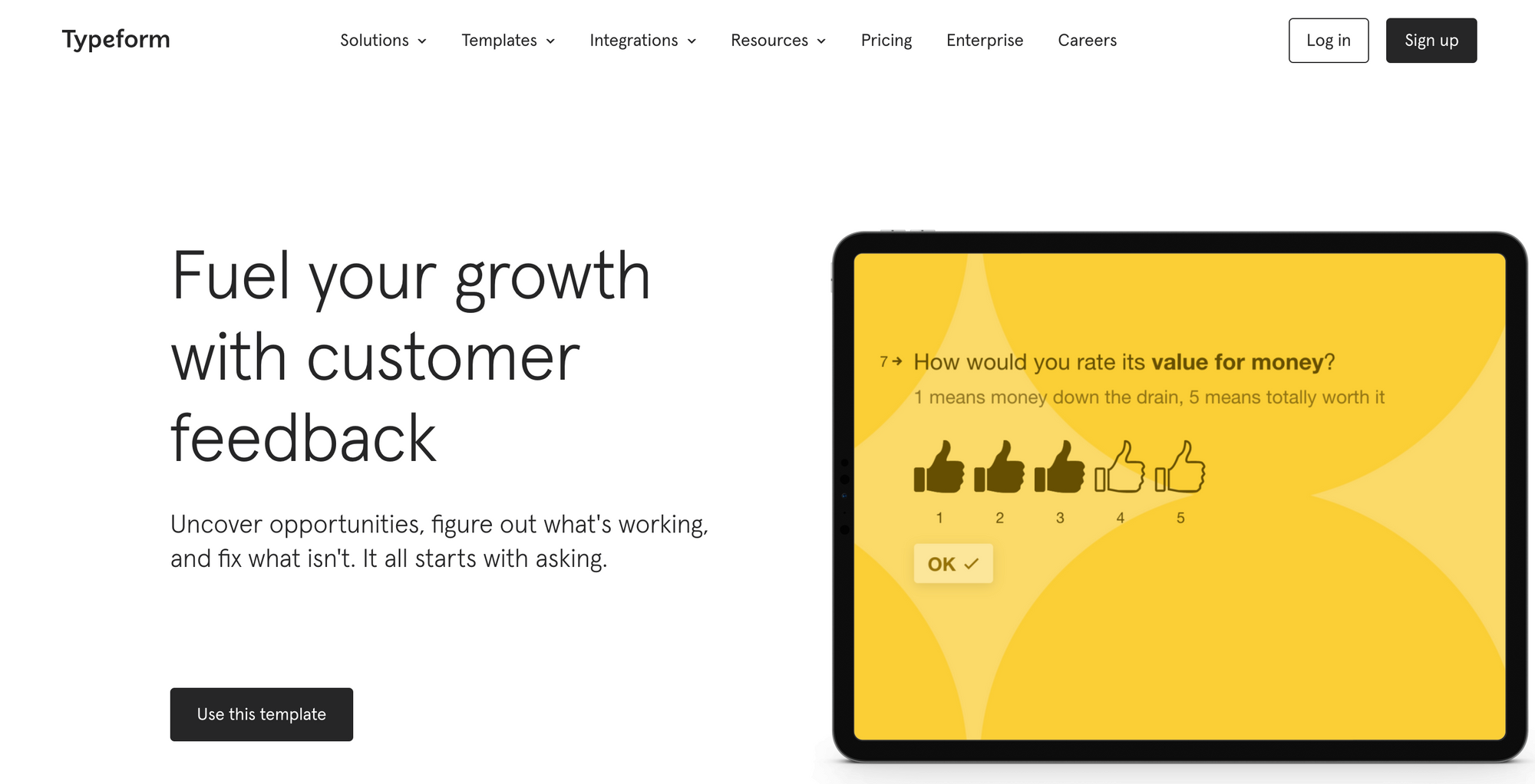
Typeform is a survey software solution for handling customer feedback and team feedback management processes that allow the creation of intuitive forms, surveys, and questionnaires. Typeform supports the survey design process with a wide range of templates offered, and the surveys can be built for business-centric purposes, such as lead generation.
Conclusion
Internal product feedback is a great way to get customer satisfaction. It can be used in many ways to help the company grow and improve its products.
Feedback can be given internally by employees or externally by customers. Internal feedback is crucial because it gives the company an idea of what it is doing right and what it needs to improve. This can help it increase customer satisfaction, which in turn increases revenue for the company.
Incorporate customer feedback into your product development.
- Set up a Customer Feedback System
- Collect Actionable Feedback from Customers and Teammates
- Analyze, Prioritize, and Categorize Feedback Data to Make Sense of It
- Act and Have a Specific Product Evolution Plan
- Announce New Features and Product Updates
With Rapidr, you can collect, analyze, and organize feedback and engage with customers as their feedback moves through the development process. Sign up for free and set up a complete customer feedback system to inform and enhance your SaaS customer journey.

